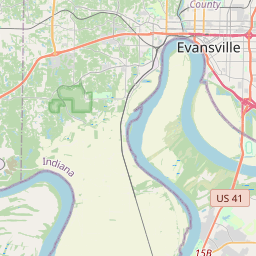Civil War Camp
Historical marker location:






April 12, 1861: The Civil War begins with the Confederate attack on Fort Sumter, located in South Carolina's Charleston Harbor.
April 15, 1861: President Abraham Lincoln issues a call for 75,000 volunteers to serve in the Union Army to suppress the rebellion.
May 24, 1861: The first major land battle, known as the First Battle of Bull Run (or First Battle of Manassas), takes place in Virginia. It ends in Confederate victory.
September 17, 1862: The Battle of Antietam in Maryland becomes the bloodiest single-day battle in American history, with heavy casualties on both sides. The Union forces, commanded by General George McClellan, manage to halt Confederate General Robert E. Lee's advance into Union territory.
January 1, 1863: President Lincoln issues the Emancipation Proclamation, declaring that all slaves in Confederate-held territories are to be set free. However, the proclamation does not immediately free all slaves in the United States.
July 1-3, 1863: The Battle of Gettysburg in Pennsylvania takes place, resulting in a significant Union victory and inflicting heavy casualties on Confederate forces. It marks a turning point in the war.
November 19, 1863: President Lincoln delivers the Gettysburg Address, emphasizing the principles of liberty, equality, and the preservation of the Union.
April 9, 1865: General Robert E. Lee surrenders to Union General Ulysses S. Grant at Appomattox Court House in Virginia, effectively ending the Civil War.
April 14, 1865: President Lincoln is assassinated by John Wilkes Booth while attending a play at Ford's Theatre in Washington, D.C.
May 10, 1865: Confederate President Jefferson Davis is captured, signaling the collapse of the Confederate government.
December 6, 1865: The Thirteenth Amendment to the United States Constitution is ratified, officially abolishing slavery throughout the country.
While this timeline provides an overview of key events, it is important to note that the Civil War spanned over four years, from 1861 to 1865, and encompassed numerous battles, campaigns, and political developments that shaped the course of American history.
The notorious bank robber John Dillinger was born in Indiana in 1903. He gained national notoriety during the Great Depression for a string of daring bank robberies and was eventually shot and killed by law enforcement in 1934.
The county was officially organized in 1818 and named after Henry Vanderburgh, a judge and prominent political figure in the Indiana Territory. During the 19th century, Vanderburgh County became an important transportation hub with the construction of the Wabash and Erie Canal in the 1830s, connecting the county to other regions. This led to increased trade and economic growth, with industries like manufacturing, coal mining, and riverboat navigation flourishing.
Vanderburgh County played a significant role in the Civil War, with several residents volunteering to fight for the Union cause. The county also witnessed the arrival of African American settlers, many of whom were former slaves seeking freedom and opportunities. The African American community made significant contributions to the county's culture and economy.
In the 20th century, Vanderburgh County continued to develop economically and socially. The discovery of oil in the early 20th century led to a boom in the petroleum industry, and the growth of manufacturing and healthcare sectors contributed to the county's prosperity. Today, Vanderburgh County is home to the city of Evansville, which serves as its county seat and remains a vibrant center for commerce, education, and culture.
Vanderburgh County Timeline
This timeline provides a condensed summary of the historical journey of Vanderburgh County, Indiana.
- January 7, 1818 - Vanderburgh County is established by the Indiana General Assembly.
- 1818-1820 - County population grows slowly as settlers begin to establish farms and businesses in the area.
- 1821 - Evansville, the county seat, is officially laid out and begins to attract more settlers and economic growth.
- 1830 - Vanderburgh County's population reaches over 2,000.
- 1837-1839 - The county experiences rapid growth due to the completion of the Wabash and Erie Canal, which connects the county to the Great Lakes.
- 1850s - Vanderburgh County becomes an important shipping and manufacturing center, with industries such as brewing, distilling, and tobacco processing.
- 1862-1865 - Vanderburgh County sends many soldiers to fight in the American Civil War.
- Late 1800s - The county sees further growth with the expansion of railroads and the rise of coal mining and oil drilling industries.
- Mid-1900s - Vanderburgh County becomes a center for healthcare, education, and service industries.
- 1970s-present - The county continues to grow and develop, with a focus on urban revitalization and economic diversification.